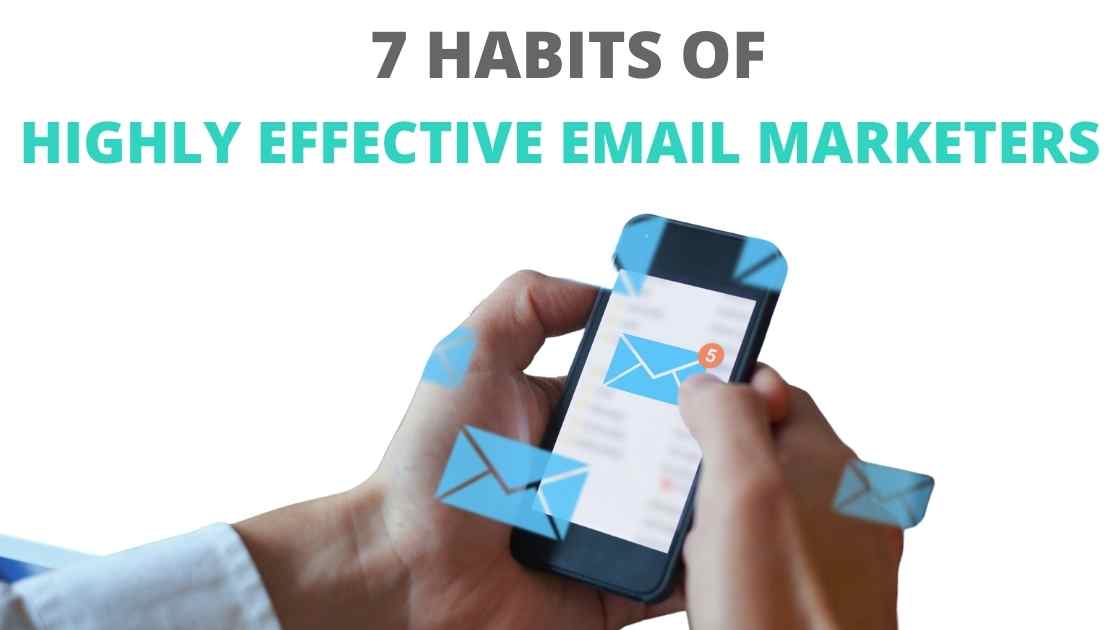Email marketing isn’t a new tactic, but it is having a moment. Marketers around the world noticed an increase in the number of subscribers opening marketing emails in 2021. As a result, it is predicted to be one of the top trends in marketing in 2022. In fact, nearly 37% of companies plan on increasing their marketing budget for email marketing in 2022.
If your law firm isn’t already sending out marketing emails, it’s likely worthwhile adding email marketing to your quiver this year. Marketing emails sent by law firms generally attract slightly higher open rates than average, with law firms often achieving an average open rate of 22% while the average across industries hovers around 21.33%.
These are 7 essential habits for law firms looking to send out highly effective email marketing campaigns:
Habit 1: Email Automation for Law Firms
Automation is an incredible tool that helps your law firm spend less time on marketing, while still gaining significant benefits from your efforts. It allows you to create an email, or a series of emails, that will be automatically sent out following a triggering event.
Welcome emails are a common example of this. Here’s what this might look like for a family law firm:
A new potential client downloads an eBook your family lawyers created about what shared parental rights means. You can set up an automated email series to ‘follow up’ with the client, as follows:
- The first email might thank them for downloading the resource and it might point them to other resources that might be helpful for someone in their situation – like, for instance, an explainer blog post about parenting agreements or a guide to navigating child support.
- If they click on any of those additional resources and download/read them, you can set up the automation to send an email in a few days asking if they found the resource useful and advising them to reach out if they have any specific queries and would like to arrange a meeting. You might include a link to any online portal you have that allows them to start the conflict check process at this point.
- If you don’t hear from them for a week, you might set up the automation to send additional resources about the process and timeline for implementing shared parenting agreements, as well as costs (if you offer fixed fees).
This email series helps your firm set the tone for the relationship as being communicative, helpful, empathetic, and knowledgeable. It demonstrates that you can anticipate their needs and that you’re focused on delivering value while solving their legal problem.
Habit 2: Law Firm Email List Segmentation
Segmentation allows you to separate your subscribers into ‘interest groups’ so you can tailor the content you send based on those interests. As an immigration law firm, for instance, you might create segments based on subscribers interested in applying to move to British Columbia, Alberta, Saskatchewan, Ontario, Quebec, and the Atlantic Provinces. Then, whenever an update for a particular province comes in, you can email your subscribers listed under the ‘British Columbia’ segment outlining the details of that update.
Segmentation often results in higher click-through rates (since the content is tailored to be more relevant for the reader). This can also improve your law firm’s reputation, increase the perceived value of your services, and help to position your law firm as a trusted resource.
Habit 3: Email Personalisation
Personalisation of marketing emails for law firms involves leveraging the data, tools, and information you have about subscribers to tailor the content specifically for them. In its simplest form, it involves including the name of the subscriber in the email (typically, we recommend you say Hi [First Name], instead of just Hi to open your email). You might wish to include it in the subject line too. What do you imagine would be a more effective subject line:
- Want to move to beautiful BC, Jane?; or
- Want to move to beautiful BC?
You’d need to research your audience to be certain, but we would hazard a guess that the email with the reader’s name in the subject line would get more clicks.
Depending on the extent to which you personalise your email marketing and automation, personalisation can be more work – but it tends to be effective (very effective). Segmentation is a type of personalisation. But you can also personalise any offers you send (such as sending a free 30-minute consult to clients who haven’t booked a meeting with you yet), set up automated emails based on the click behaviour of certain subscribers, and/or send out an automated email wishing subscribers a happy birthday.
Habit 4: Strategising Before Sending Emails
Your law firm’s email marketing strategy is going to vary depending on your goals. Generally, you’ll build your email marketing strategy around:
- What you know about your target audience;
- What your competitors are doing (or gaps you’ve identified in their marketing);
- Current design trends; and
- How often you intend (or have time) to send out email marketing content.
With this in mind, you should create a plan outlining your intended content for (at least) your next three months. Ideally, you should write the marketing purpose of each email into your planning as well – to ensure this remains top of mind.
Habit 5: Quality Content Creation
The quality of your content counts. Your subscribers have limited time and an increasing number of emails arriving in their inbox, so you need to ensure your emails are competitive, compelling, and creative. You should prioritize delivering content that is relevant and timely, such as changes to the law, explanations of recent cases, and details of your recent work successes.
At a minimum, you must:
- Ensure your emails are well-formatted, so the content is easy to read (on mobile, tablet and desktop).
- Put the most important information at the top of your email.
- Make it apparent what the purpose of the email is. Do you want them to read a blog post, book a meeting with you, or both? Your intent should be clear, but not salesy.
- Use language that’s able to be easily digested by your subscribers.
Habit 6: Law Firm Email Mailout Optimisation
It’s possible to guess whether the volume of your emails, the timing, the subject lines you’re using, and the way you’re distributing your content resonates with your audience. But relying on testing to optimise your mailouts is a much more strategic decision.
Many email marketing platforms come with the option to pay for additional functionality that allows you to run multivariate tests, known as A/B tests. These A/B tests let you change various aspects of your emails and send out those changes to a segment of your audience.
You might, for instance, choose to send an email out to 50% of your subscribers on a Monday in the morning and the other 50% on Wednesday in the afternoon. If you run those tests over a period of weeks, you can determine the most impactful time to send your emails to optimise open rates.
Similarly, you can use these tools to test your subject line format, content layout and ‘from’ name (the name that shows up in the recipient’s inbox). You can also adjust the number of times you send emails to your subscribers each month, if you aren’t getting the results you’d hoped for.
Your law firm email marketing campaigns have the potential to be more successful if you invest in these tools and spend the time running tests to work out what resonates with your audience. Doing so helps to ensure your marketing speaks to what your audience wants – not what you believe they want.
Habit 7: Adjust Strategies Based on Your Results
What gets measured gets managed, as the saying goes. Measuring the results of your email marketing campaigns helps you to improve what’s not working and give your subscribers more of what they want. In turn, this results in a greater ROI on your email marketing spend, as well as ancillary benefits like improved brand reputation and increased trust.
If you’re using an email marketing platform to send your law firm’s marketing emails, you should keep an eye on the following figures:
- Open rate. Aim for open rates higher than 22% to achieve above industry standards.
- Click rate. Rates around 2.8% are to be expected. If your click rate is significantly higher than this, it’s likely that you’re getting inaccurate results due to ‘bot clicks’.
- Bounce rates. Strive for a bounce rate of .5% or lower.
- Unsubscribe rates. If your unsubscribe rate is above .25%, you should contemplate what went wrong with that mailout and make some changes for the future.
- Conversions and return-on-investment.
Finally, and potentially most importantly for those operating in the legal sphere, it’s important to remember that sending out an imperfect marketing email is better than not sending one at all. These 7 habits make for more effective marketing emails, but you shouldn’t shy away from hitting send just because you’re missing some of the above elements.







Leave A Comment
You must be logged in to post a comment.